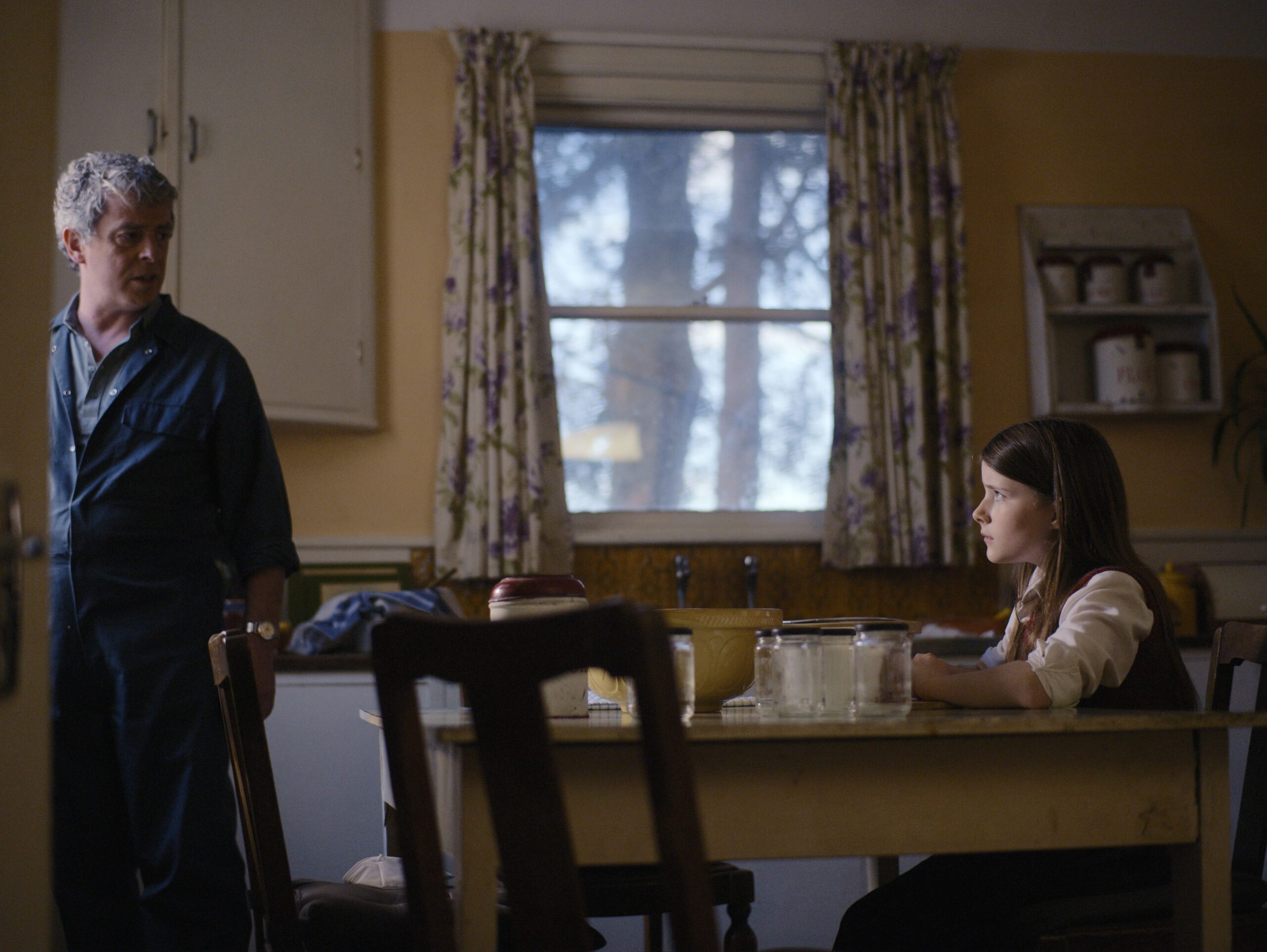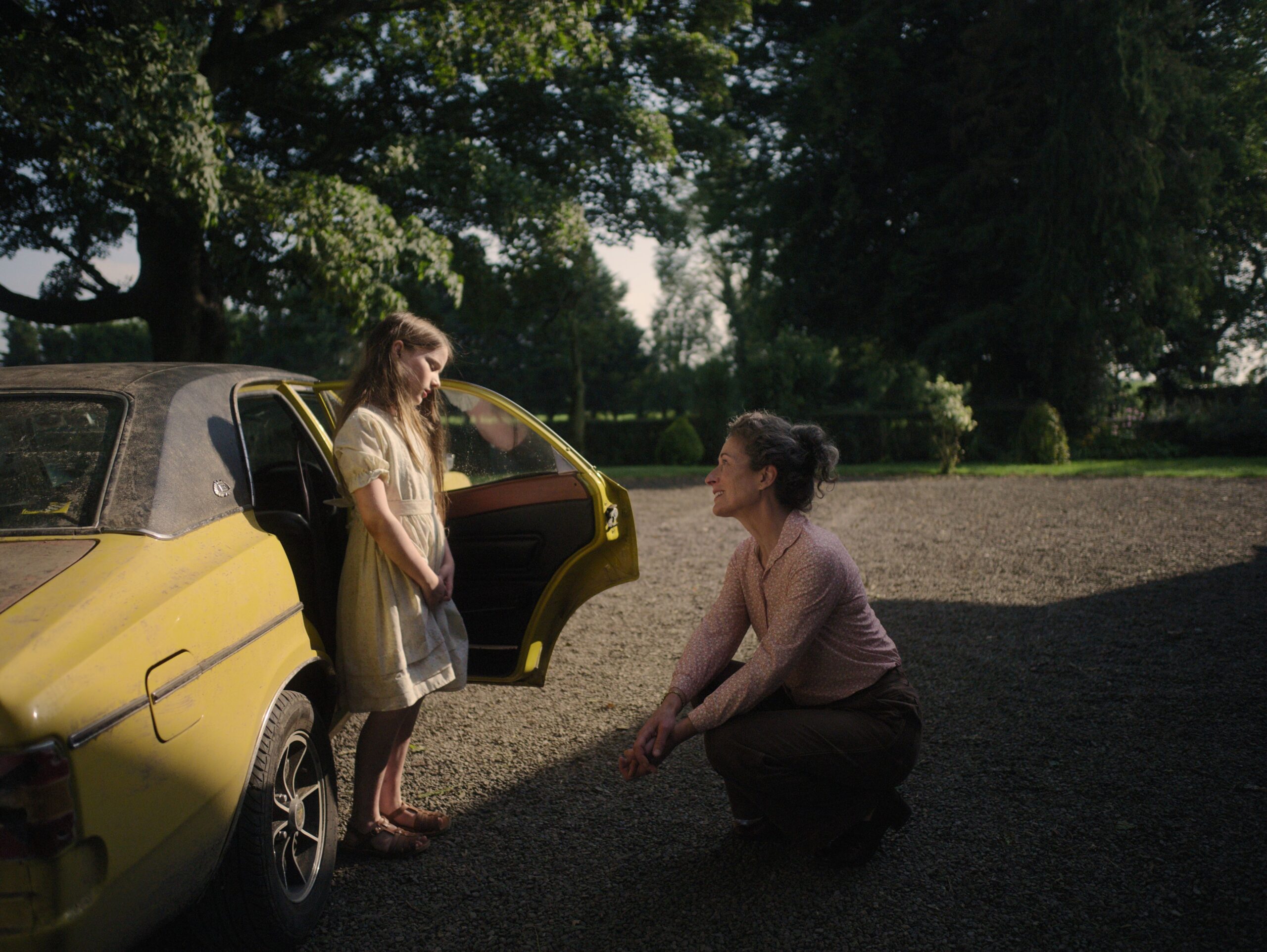review
Cinema’s first decades were non-verbal, meaning filmmakers and performers then had to become masters at expressive acting and symbolic imagery. The cut—potentially the most defining element of the medium—had to speak louder than any dialogue, and camera composition was crucial to understanding how we felt about our characters, and how the film wanted them to be seen. The Quiet Girl, with its boxy Academy ratio and expertly framed motion, feels in conversation with some of the oldest forms of cinematic storytelling, a film that speaks in low volumes but always pulls you in closer.
Despite not being a silent film, the Oscar-nominated, Irish-language feature debut from director Colm Bairéad, which focuses on a sliver of a young Irish girl’s life in the early ’80s, finds a layer of drama in its prolonged, noticeable silence that wasn’t available to the soundless works of early Hollywood. Here, our characters are able to talk, but choose not to—or at least, are compelled not to. Grief and neglect choke the small Irish ensemble: not just visible in the timidness of young Cáit (Catherine Clinch) as she’s taken away from her impoverished home for a summer, but also in the house she comes to, belonging to the more affluent Cinnsealachs, Seán (Andrew Bennett) and Eibhlín (Carrie Crowley).

It seems at first that all three are simply unprepared to cohabitate a space with each other, but The Quiet Girl gently, tragically reveals the pain Cáit and the Cinnsealachs have internalised and been expected to live with. Fittingly for a film interested in how small gestures can have huge impacts, the explosion of love Cáit finally shows to her foster parents ends up being a tiny one—but even that comes in the final moments where she’s left wishing, hopelessly, for a life she doesn’t have. Bairéad’s film feels like a thoughtful eulogy for the futures that neglected children have been denied. It’s a tragic reckoning with how grief makes you feel like you’ve failed, when the real failures are those who don’t spare a passing thought to how they’ve affected others.
The Quiet Girl’s power comes in no small part from the language it’s in. Irish, also known as Gaelic, has been classified as Definitely Endangered by the UNESCO Atlas of the World’s Languages in Danger, and any story told in an indigenous, endangered tongue that gets attention from the Academy feels, in some sense, radical. The complicated, violent history of British colonialism has attempted to suppress and smother the language, and a film that focuses on its speakers resisting complex emotional expression feels particularly resonant. The scenes where Seán and Eibhlín chat with close or estranged friends, cracking well-worn jokes or filling gaps in conversation with colloquialisms may not be overtly political, but Bairéad’s film is still an act of preservation, archiving a language that desperately needs to be heard, regardless of what’s being said.
Bairéad’s film is still an act of preservation, archiving a language that desperately needs to be heard, regardless of what’s being said.
And yet, there’s much to be heard in The Quiet Girl’s silences. As is the case in many households, youngsters are to be put to work, and Cáit quickly joins Seán in the chores around the Cinnsealach dairy farm. There’s a rhythm to The Quiet Girl’s scenes of labour, repeated actions we return to so we can observe the gradual gelling between surrogate father and daughter; watching Cáit and Seán turn mopping the milking parlour into a good-hearted race reminds us how chores offer a sense of purpose and camaraderie that children respond keenly to with no words needed.
With the Cinnsealachs, Cáit enjoys a status that feels more equal with grownups than she’s used to; she is being treated as someone useful, who can contribute and be part of an ordered, productive home. And yet, her purpose and independence feels a touch bittersweet; she’s looking after a home that she will not get to live in forever, despite being welcome there.

But silences in The Quiet Girl can be venomous, a reminder of the frailty and fleetingness of the Cinnsealach’s equilibrium. The tranquillity of a breakfast scene late in the film, in which the makeshift family share no words, is intruded into by a mundane radio commercial promoting a “back to school” sale. It takes until Eibhlín switches it off for us to realise that back to school means end of summer, and returning to a life where Cáit is not valued or cared for. The class dynamics of The Quiet Girl are always visible but never really addressed: the Cinnsealachs aren’t rich, but can clearly afford to spend more time and money on Cáit than her own mother can, and it’s not like the problem of child abuse can be fixed by allotting every neglected child to couples with a more comfortable lifestyle. But whatever their background, there’s a clear difference in the way Cáit is seen by the Cinnsealachs compared to her parents, especially her father (Michael Patric): not as a nuisance, but someone precious; not as someone who highlights their shortcomings, but who reveals their inner humanity.
Of course, the quietest characters often require the most assured performers. Clinch has an unenviable task portraying the confused, delicate emotional state of someone who’s not old enough yet to comprehend the ways she’s been mistreated, but is struck by her attentive new caregivers. For Seán and Eibhlín, Cáit’s arrival forces them out of the hibernation of grief, over a familial loss that is jabbed at with every act of parenting they perform.
Crowley plays Eibhlín’s doting affection as careful, always toeing the the line in how she treats Cáit—her foster child shouldn’t, after all, feel like just a houseguest—but in her softer moments there’s a sense Eibhlín is willingly pushing memories of her loss to the surface. Bennett, on the other hand, plays Seán with a universally recognisable curmudgeonly gruffness, keeping Cáit at an initial remove that soon melts into something sweet and giving. Together, they form an uneven but lovingly made patchwork of wounded souls. The Quiet Girl lets you stand witness to all the tiny signs of love and loss, spoken and unspoken, that made up one Irish home for a small amount of time.
Read our exclusive interview with director Colm Bairéad here.
Curated by humans, not algorithms.
© 2024 A Good Movie to Watch. Altona Studio, LLC, all rights reserved.